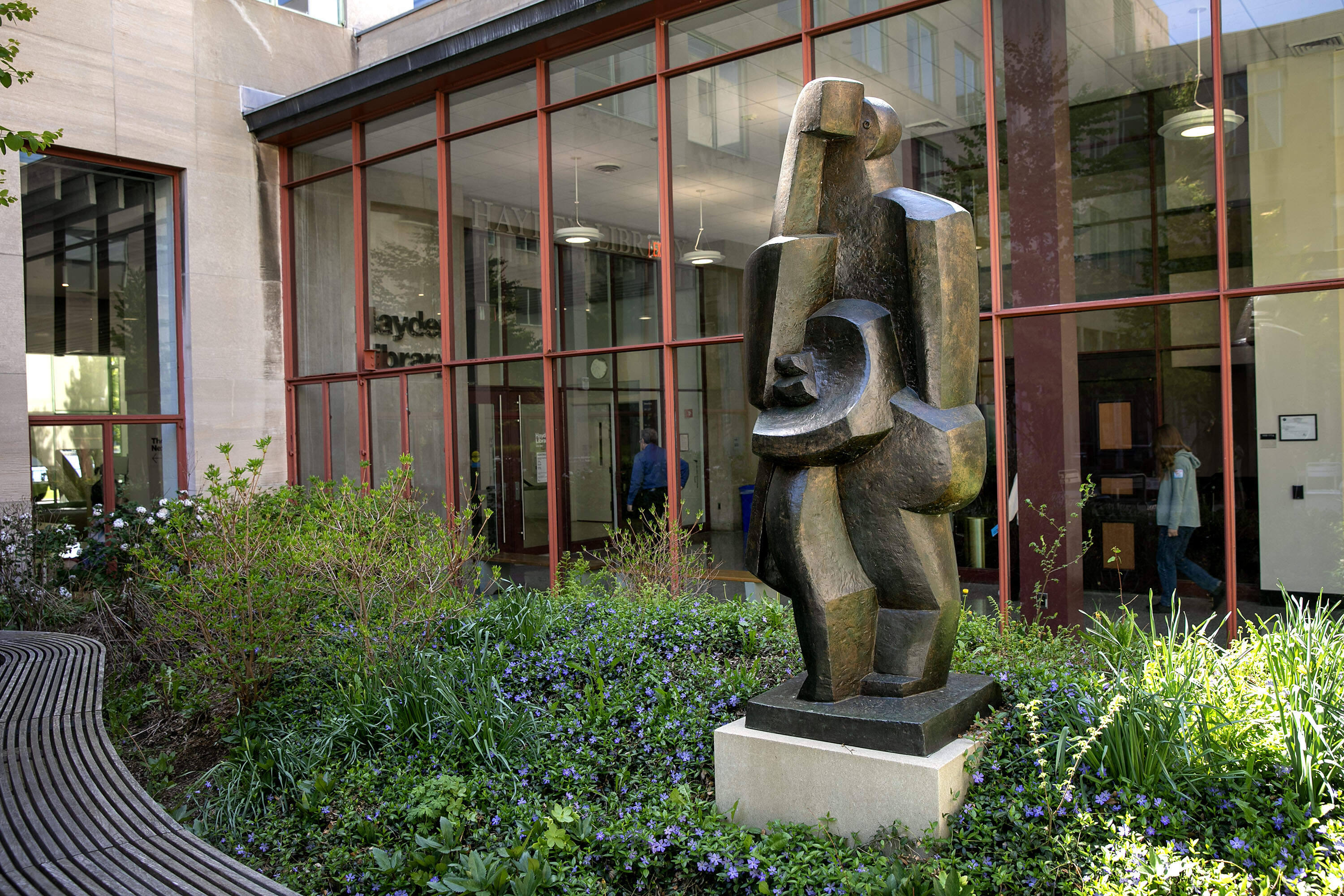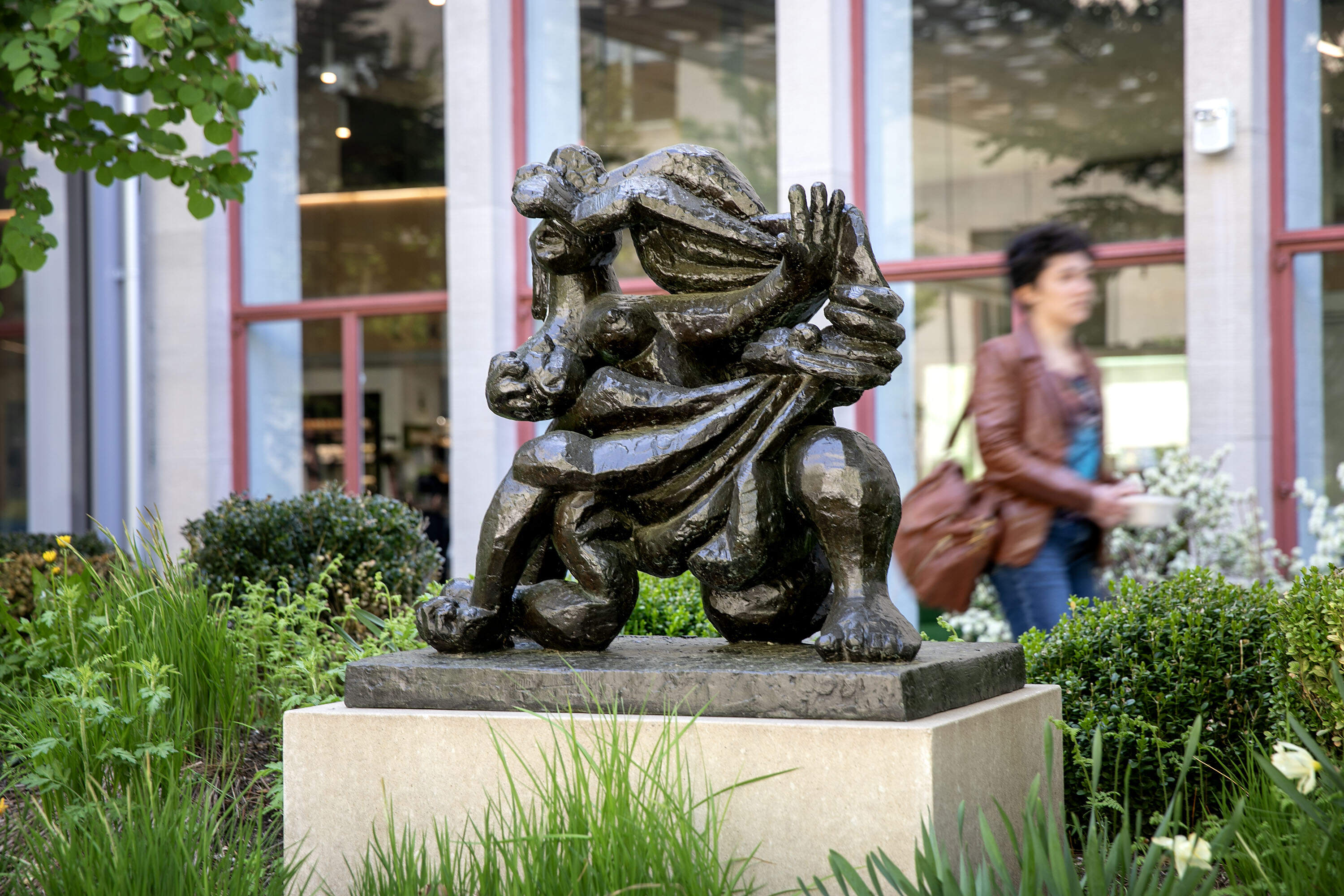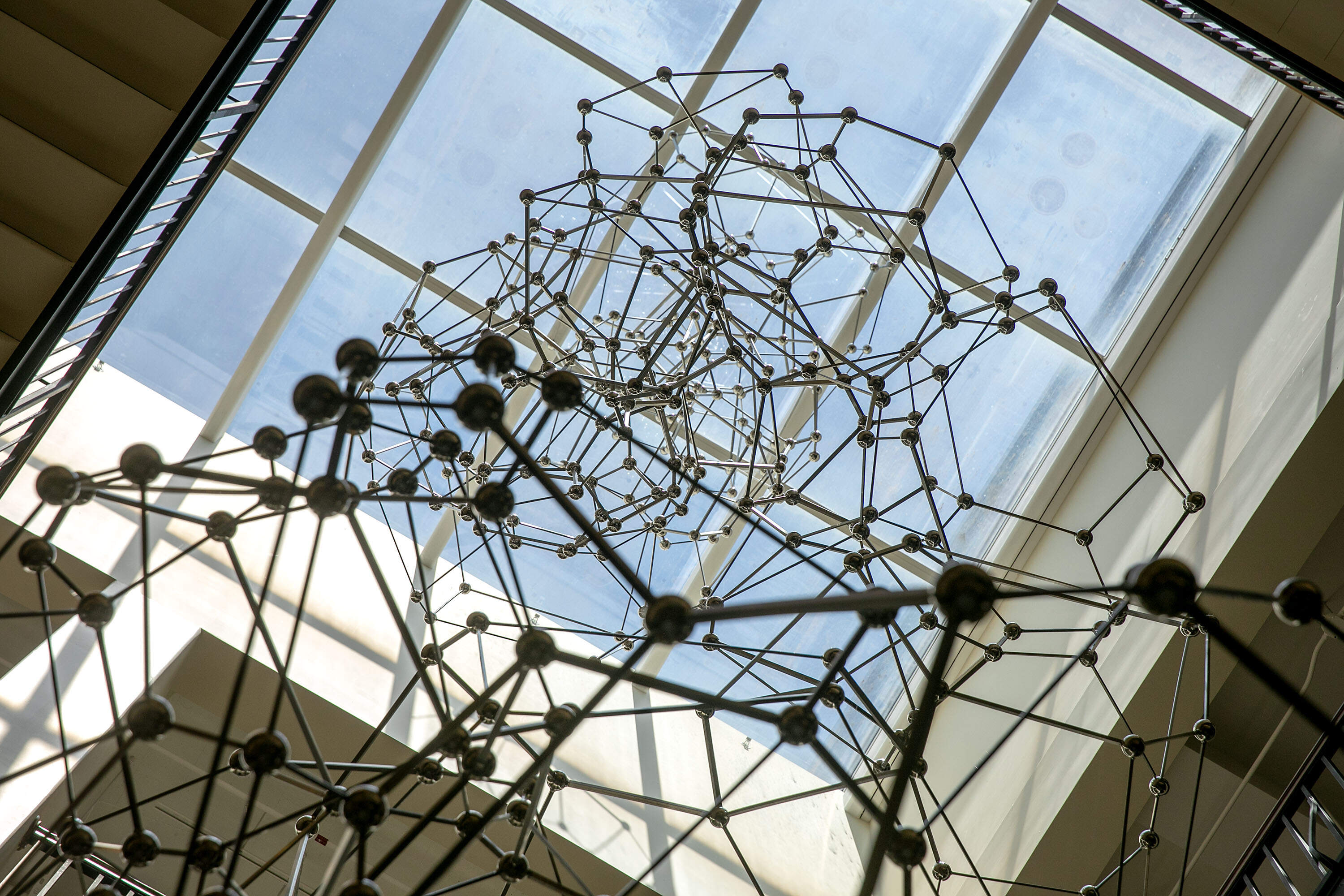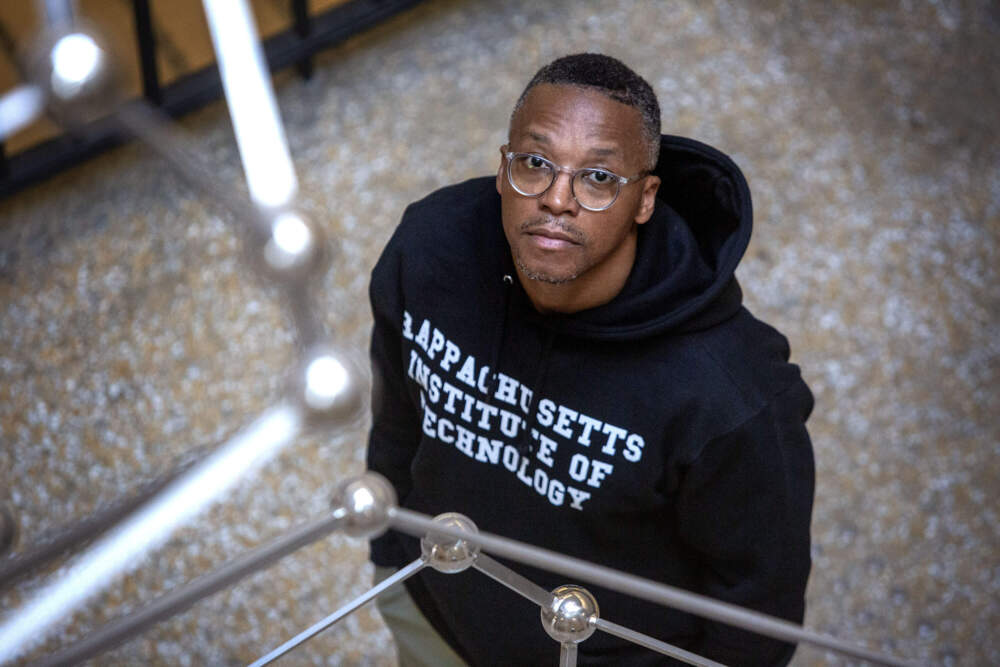In the summer of 2022, the rapper Lupe Fiasco sat on the grass near a sculpture on MIT’s campus and, on the spot, wrote and recorded a song about it. The Big Sail, by the American sculptor Alexander Calder, is spider-like and imposing, a 25-foot-tall abstraction made of spiky black steel. As he sat facing the sculpture, swatting at bugs, Fiasco conjured a dizzying litany of metaphors to describe it. “Looking like math/ Looking like geometry/ Looking like jazz/ Looking like a craft/ Looking like it crashed,” he raps on the song that resulted, “Sailing Flavor.”
You can now stream the entirety of “Sailing Flavor,” along with other tracks inspired by public art at the university. It’s part of an ongoing project by Fiasco, an MIT visiting scholar, who is interested in the creative possibilities of site-responsive music. He calls the process of making these songs “ghotiing,” which is confusingly pronounced “fishing” – a phonetic joke in which the “f” sound is drawn from the “gh” in “rough,” and so on. Fiasco uses ghotiing as a teaching tool, sending his MIT students on outings to various public art pieces across campus to “fish” for musical inspiration. He ultimately hopes to make a song for every piece of art on MIT’s campus.

The main rule of ghotiing is that you can’t come with any pre-written lyrics. You can bring a pre-recorded beat, but you have to write, edit and record the verses on-site. Fiasco was inspired by impressionist painters like Monet and Cezanne, who would paint the same outdoor scene over and over, rendering it in different weather and at different times of day. The ghotiing process also puts the music in touch with early hip-hop.
“Early rap wasn’t recorded, it was all live, in the moment, onstage,” Fiasco told me. The idea is to express something that can only be captured in one specific place, on one specific day, at one specific moment.

Fiasco’s songs are an advertisement for MIT’s percent-for-art program, which allocates up to $500,000 to commission new permanent art every time there’s a major campus construction project. The university counts 51 works of public art and architecture in its collection. Fiasco acknowledged that there was an element of reputation-burnishing in MIT’s commitment to public art – but he insisted there was more to it than just “[stuff] put there by rich donors, for tax write-offs.” Once the art entered the public sphere, it took on a life of its own.
“Once it’s given to the curators, and they decide where to kind of put and place, you realize that, ‘Oh, there’s a wider story that’s being told on campus, a very quiet story, but big and loud,” he said, summing up the paradox of public art, which can be easy to overlook even when it’s 25 feet tall.
Recently, Fiasco offered a tour of some of the works that inspired the songs on “GHOTIING MIT.” Below are excerpts and photos from that conversation.

Alexander Calder, The Big Sail
Song: “Sailing Flavor”
Calder is best known for his hanging sculptures, but The Big Sail is among the artist’s “stabiles,” or sculptures that rest on the ground – though they nevertheless toy with balance and a sense of precarity, much like their dangling brethren. The Big Sail was the first piece of art Fiasco wrote a song about. He calls the result a “primitive” attempt at ghotiing, concerned mostly with describing the sculpture. But the song does get a bit whimsical at the end.
“The MIT sailing pavilion is right over there, across the street,” Fiasco said. “So there’s that layer of, ‘Oh, maybe [the sculpture] wants to get out, but it’s beached.” The song ends with Fiasco singing: “Oh, lord, sail again/ Put me right back/ Where the whales ascend.”

Anish Kapoor, Non-Object (Plane)
Song: “Funhouse Flavor”
Kapoor is famous for his large, reflective sculptures, most famously Cloud Gate in Chicago, better known as “The Bean.” Non-Object (Plane) hangs in the lobby of MIT’s Stata Center – a trippy piece of architecture by Frank Gehry and another notable MIT landmark. Non-Object (Plane) is a 16-foot-tall convex mirror that turns everything reflected in it upside-down. Whether you can even see yourself in it depends on where you stand.
The song Fiasco wrote, “Funhouse Flavor,” ruminates on “ introspection and vision and seeing and not seeing and blurriness,” Fiasco said. But it also casts a wider view, at the surrounding environment. A huge mobile of paper cranes hangs from the skylight in the Stata Center lobby. It was created by MIT students in memory of Sean Collier, the MIT police officer who was killed by the Boston Marathon bombers. The cranes appear obliquely in “Funhouse Flavor,” warped and inverted through wordplay: “Got these burdens all on my shoulders/ Searching through all my folders,” Fiasco raps in the second verse. You wouldn’t necessarily know the line is a reference to the folded (folders) birds (burdens) that float above you when you look at Kapoor’s sculpture.
“ You got to look up, you got to expand your view,” Fiasco said. “Take into consideration the entire environment. Be respectful, to some degree.”

Jacques Lipchitz, Hagar in the Desert, Sacrifice III and Bather
Song: “3 Piece Flavor”
There are three abstract bronze sculptures by Jaques Lipchitz in the courtyard at the Hayden Memorial Library. Hagar in the Desert depicts the Biblical story of a woman abandoned in the desert with her baby, while Sacrifice III shows a cloaked figure slaughtering a rooster, an apparent reference to kapparot, a Jewish ritual of atonement. Both pieces reflect Lipchitz’s experience fleeing Nazi-occupied France, and are infused with anguish. The third sculpture, Bather, is a cubist rendition of a nude figure, serene in its abstraction.
“This is a violent courtyard, right?” Fiasco said. But the Bather seemed, to him, to stand apart, coldly observing the suffering around it.
“ We stand by and let the barbarism occur, based on these old-fashioned ethical systems and that we, here at MIT, need to be aware of. But also, we sit back and do nothing,” he said. “Are you the Bather, just watching it all go down?”

Antony Gormley, Chord
Song: “Molecule Flavor”
Chord stretches more than 50 feet from floor to roof in the Simons Building, twisting crazily through the center of an open staircase. The metal sculpture, made of silver rods and spheres, evokes a molecule, albeit one with a Willy Wonka-esque look. “ It’s stable, even though it’s completely asymmetrical,” Fiasco said. It made him think of his students, and all the pressure they must feel to excel in MIT’s competitive environment. The song, “Molecule Flavor,” contains a message to them.
“You don’t need to be the same as everybody else to keep up,” Fiasco said. “You just need to be your asymmetrical self.”

